| DC66090 |
F-14512 (free base)
Featured
|
F-14512 is a DNA topoisomerase II inhibitor potentially for the treatment of acute myeloid leukemia. |
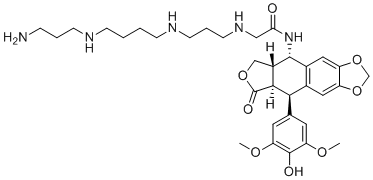
|
| DC66091 |
Sultosilic acid, piperazine salt
Featured
|
Sultosilic acid, piperazine salt is a lipid lowering drug. It causes significant shortening of the euglobulin lysis time and a significant diminution of platelet adhesiveness, as well as statistically significant decrease of total cholesterol, triglycerides, beta- and pre-beta-cholesterol and an increase of alpha-cholesterol. |

|
| DC66092 |
Isothiuronium
Featured
|
Isothiouronium is a functional group with the formula [RSC(NH2)2]+ (R = alkyl, aryl) and is the acid salt of isothiourea. |
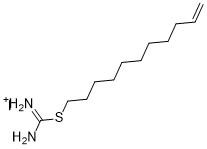
|
| DC60581 |
BMS-986189
Featured
|
BMS-986189 is a potent macrocyclic peptide-derived PD-L1 antagonist with Kd of less than 10 pM against both human and cynomolgus monkey PD-L1. |
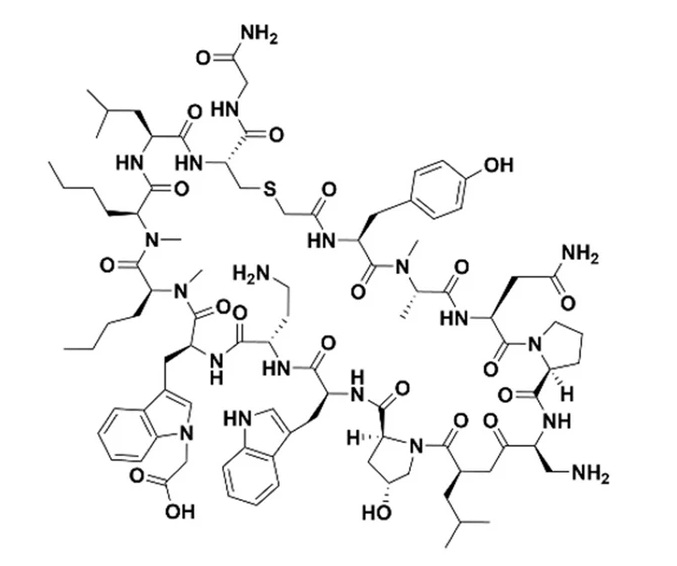
|
| DC60582 |
18F-BMS-986229
Featured
|
18F-BMS-986229 is a macrocyclic PD-L1 peptide PET ligand with high radiochemical purity and high specific activity for imaging PD-L1. 18F-BMS-986229 exhibits low background signals in non-PD-L1 expressing organs and generates high signals to noise ratios within PD-L1( +) tissues (tumors and NHP spleen). |
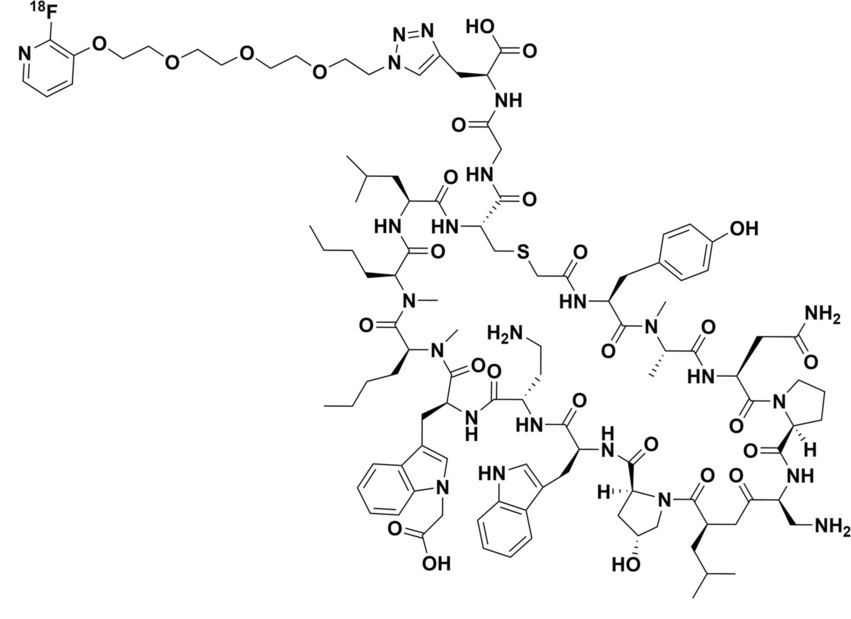
|
| DC66093 |
DSPE-CY7
Featured
|
Phospholipids DSPE belong to the lipid family of biopolymers. Phospholipids consist of two fatty acids, a glycerol unit, a phosphate group, and a polar molecule. The phosphate groups and polar head regions of the molecule are hydrophilic (attracted to water), while the fatty acid tail is hydrophobic (repelled by water). When placed in water, the phospholipids Orient themselves into a double layer, where the non-polar tail region faces the inner region of the double layer. The polar head region faces outward and interacts with the water. Applications in drug release, nanotechnology and new materials research, cell culture. As well as ligand research, peptide synthesis support, grafted polymer compounds, new materials and pegylated modified functional coatings and other active compounds. |

|
| DC66094 |
DSPE-CY5.5
Featured
|
Phospholipids DSPE belong to the lipid family of biopolymers. Phospholipids consist of two fatty acids, a glycerol unit, a phosphate group, and a polar molecule. The phosphate groups and polar head regions of the molecule are hydrophilic (attracted to water), while the fatty acid tail is hydrophobic (repelled by water). When placed in water, the phospholipids Orient themselves into a double layer, where the non-polar tail region faces the inner region of the double layer. The polar head region faces outward and interacts with the water. Applications in drug release, nanotechnology and new materials research, cell culture. As well as ligand research, peptide synthesis support, grafted polymer compounds, new materials and pegylated modified functional coatings and other active compounds. |

|
| DC66095 |
DSPE-CY5
Featured
|
Phospholipids DSPE belong to the lipid family of biopolymers. Phospholipids consist of two fatty acids, a glycerol unit, a phosphate group, and a polar molecule. The phosphate groups and polar head regions of the molecule are hydrophilic (attracted to water), while the fatty acid tail is hydrophobic (repelled by water). When placed in water, the phospholipids Orient themselves into a double layer, where the non-polar tail region faces the inner region of the double layer. The polar head region faces outward and interacts with the water. Applications in drug release, nanotechnology and new materials research, cell culture. As well as ligand research, peptide synthesis support, grafted polymer compounds, new materials and pegylated modified functional coatings and other active compounds. |

|
| DC66096 |
DSPE-CY3
Featured
|
Phospholipids DSPE belong to the lipid family of biopolymers. Phospholipids consist of two fatty acids, a glycerol unit, a phosphate group, and a polar molecule. The phosphate groups and polar head regions of the molecule are hydrophilic (attracted to water), while the fatty acid tail is hydrophobic (repelled by water). When placed in water, the phospholipids Orient themselves into a double layer, where the non-polar tail region faces the inner region of the double layer. The polar head region faces outward and interacts with the water. Applications in drug release, nanotechnology and new materials research, cell culture. As well as ligand research, peptide synthesis support, grafted polymer compounds, new materials and pegylated modified functional coatings and other active compounds. |

|
| DC66097 |
DSPE-RB
Featured
|
Phospholipids DSPE belong to the lipid family of biopolymers. Phospholipids consist of two fatty acids, a glycerol unit, a phosphate group, and a polar molecule. The phosphate groups and polar head regions of the molecule are hydrophilic (attracted to water), while the fatty acid tail is hydrophobic (repelled by water). When placed in water, the phospholipids Orient themselves into a double layer, where the non-polar tail region faces the inner region of the double layer. The polar head region faces outward and interacts with the water. Applications in drug release, nanotechnology and new materials research, cell culture. As well as ligand research, peptide synthesis support, grafted polymer compounds, new materials and pegylated modified functional coatings and other active compounds. |
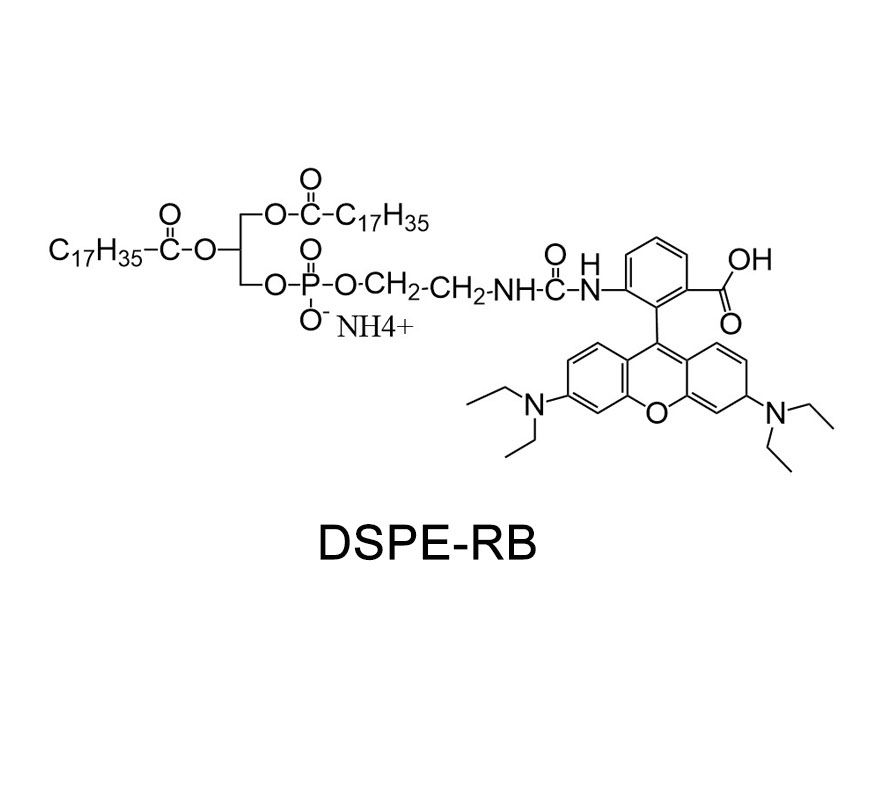
|
| DC66098 |
DSPE-FITC
Featured
|
Phospholipids DSPE belong to the lipid family of biopolymers. Phospholipids consist of two fatty acids, a glycerol unit, a phosphate group, and a polar molecule. The phosphate groups and polar head regions of the molecule are hydrophilic (attracted to water), while the fatty acid tail is hydrophobic (repelled by water). When placed in water, the phospholipids Orient themselves into a double layer, where the non-polar tail region faces the inner region of the double layer. The polar head region faces outward and interacts with the water. Applications in drug release, nanotechnology and new materials research, cell culture. As well as ligand research, peptide synthesis support, grafted polymer compounds, new materials and pegylated modified functional coatings and other active compounds. |
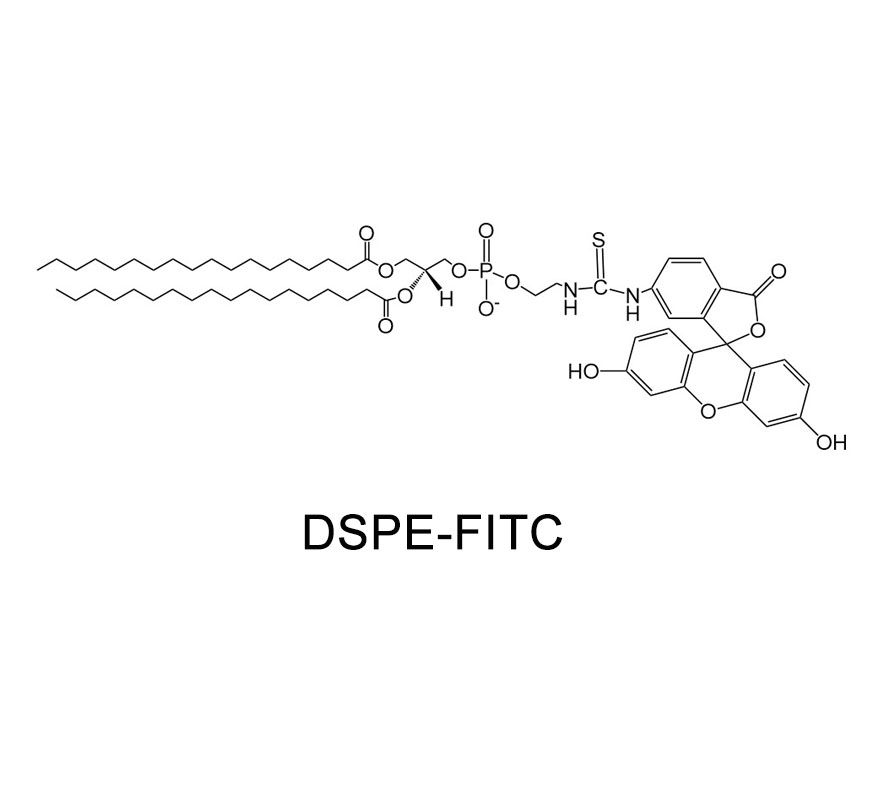
|
| DC66099 |
DSPE-FA
Featured
|
|

|
| DC66100 |
DSPE-Biotin
Featured
|
DSPE-Biotin is a lipid. DSPE-Biotin can be used for the research of various biochemical. |
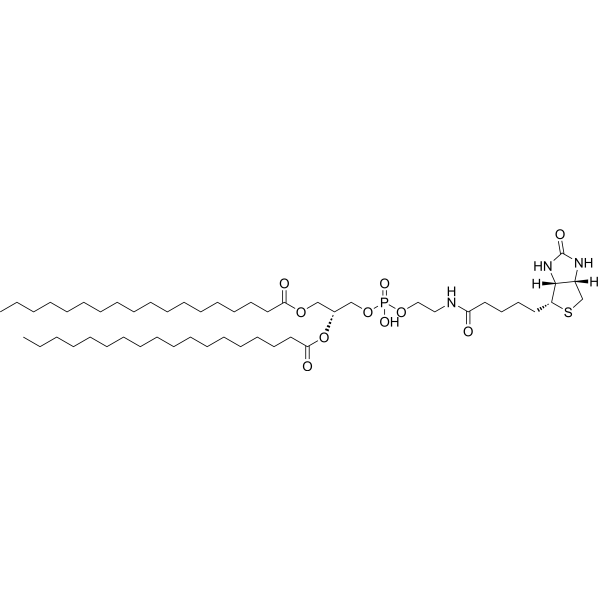
|
| DC66101 |
DSPE-COOH
Featured
|
|
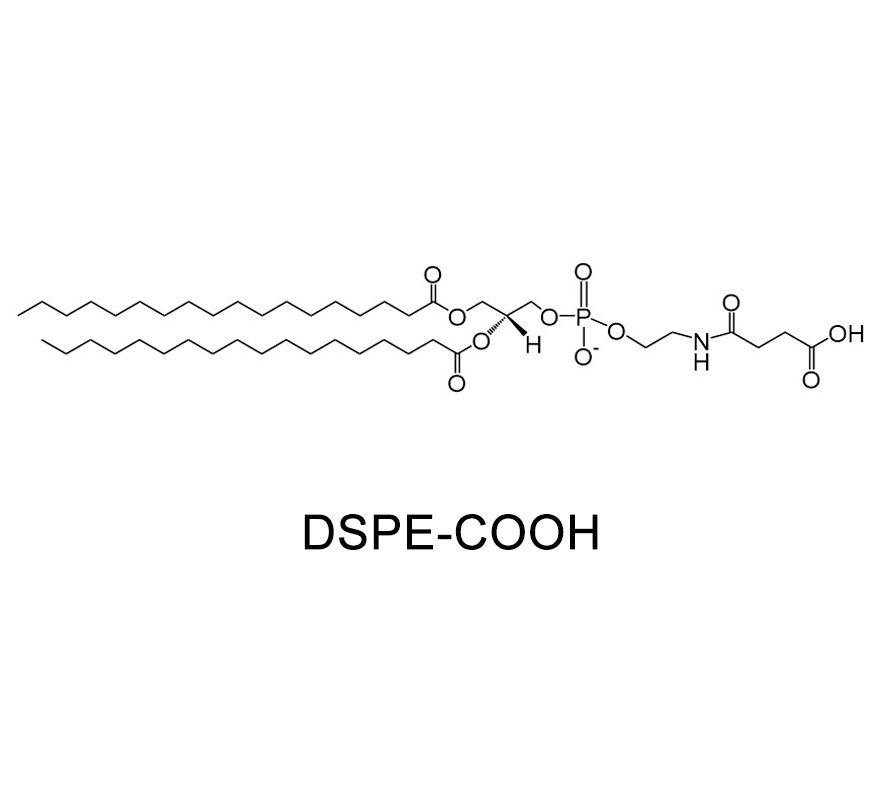
|
| DC66102 |
DSPE-SH
Featured
|
Modified phospholipid products: it is to modify the amino group (primary amino group) -NH3 at the end of DSPE into NHS, COOH, N3, MAL, Thiol (SH), OPSS, FITC, FA, Biotin and other different active groups.
Phospholipids DSPE belong to the lipid family of biopolymers. Phospholipids consist of two fatty acids, a glycerol unit, a phosphate group, and a polar molecule.
The phosphate groups and polar head regions of the molecule are hydrophilic (attracted to water), while the fatty acid tail is hydrophobic (repelled by water).
When placed in water, the phospholipids Orient themselves into a double layer, where the non-polar tail region faces the inner region of the double layer. The polar head region faces outward and interacts with the water. |
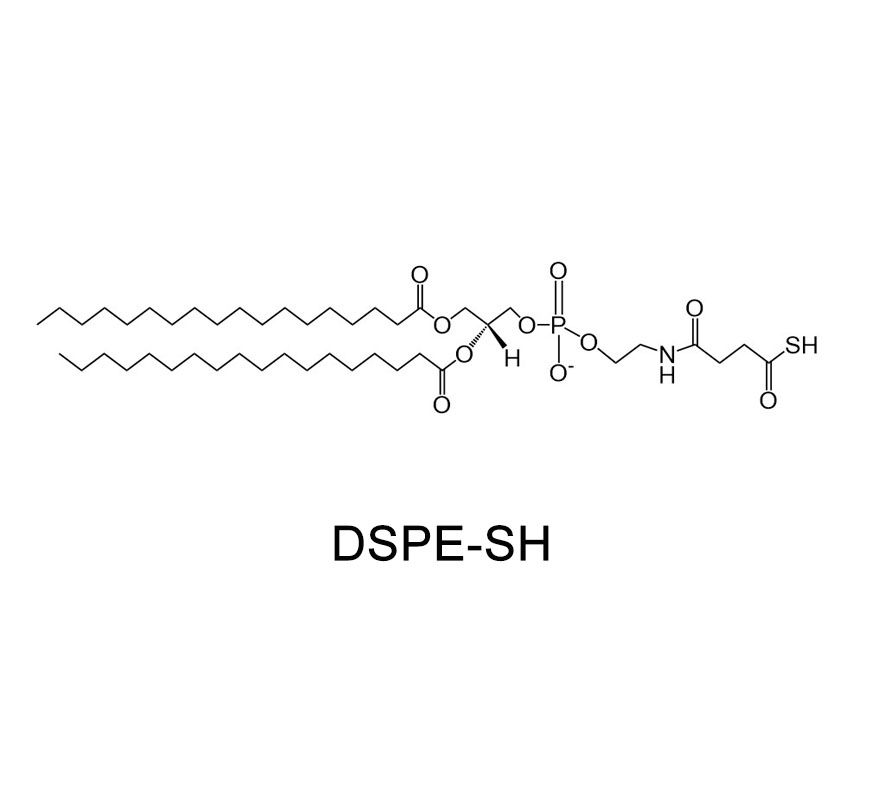
|
| DC66103 |
DSPE-NH2
Featured
|
Phosphatidyl amino DSPE-NH2 is one of the most common materials in polymer modification.
By grafting phospholipid bonds to amino molecules, polymeric polymers with different chain segments are formed by using phospholipid molecules, which reduces the thermal stability and weather resistance of the materials.
At the same time, by introducing modifiers to improve the water resistance of the polymer itself, improve its processing performance, and finally obtain good water resistance, high mechanical properties, good weather resistance, good acid and alkali resistance products.
DSPE-NH2 material is mainly composed of isopropyl alcohol butadiene, the isopropyl alcohol butadiene mixture is an aromatic polymer, with strong water absorption, hydrophilicity, and wide molecular weight distribution, good solubility, high mechanical strength characteristics, so the material can be used in many fields. |

|
| DC66104 |
DSPE-ICG
Featured
|
ICG indocyanine green is a three carbon cyanine dye with good water solubility and a molecular weight of 775. Indocyanine green can almost completely bind to plasma proteins in plasma and whole blood, ensuring that it remains almost completely in Xueguan and is not easily diffused outward. Indocyanine green (ICG) is a near-infrared imaging reagent currently approved by the US Food and Drug Administration (FDA) for clinical use. ICG is a three carbon cyanine dye with near-infrared characteristic absorption peaks, emission wavelengths between 795 and 845nm, and has amphiphilic structures that are both hydrophilic and lipophilic. Near infrared light has a greater penetration depth in tissues and is less affected by biological tissue background, Due to its near-infrared absorption and emission fluorescence characteristics, ICG can be used as an excellent tissue penetrating agent in vivo. |

|
| DC66105 |
DSPE-PEI
Featured
|
|
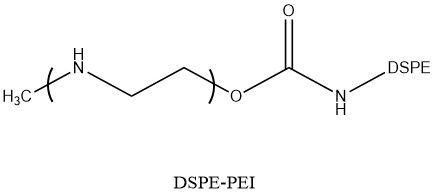
|
| DC66106 |
DSPE-Maleimide
Featured
|
|

|
| DC60583 |
AP30663
Featured
|
AP30663 is a KCa2 channel inhibitor that can be used for the study of atrial fibrillation[1].
|
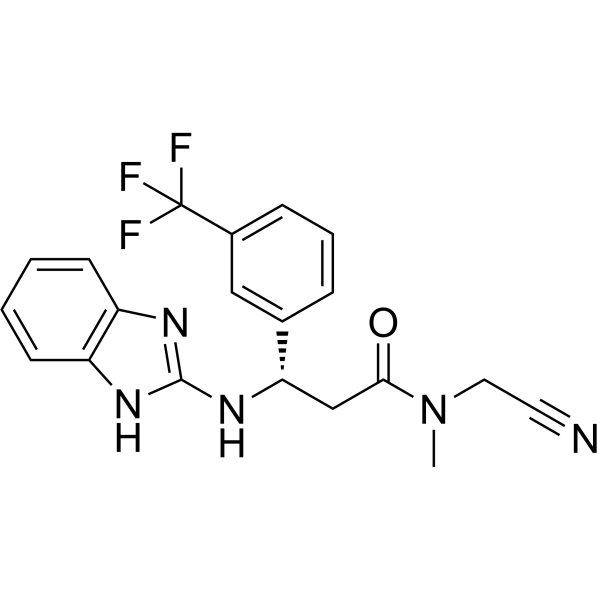
|
| DC60584 |
NT-0249
Featured
|
NT-0249 is an orally active NLRP3 inhibitor. NT-0249 has anti-inflammatory activity[1]
|
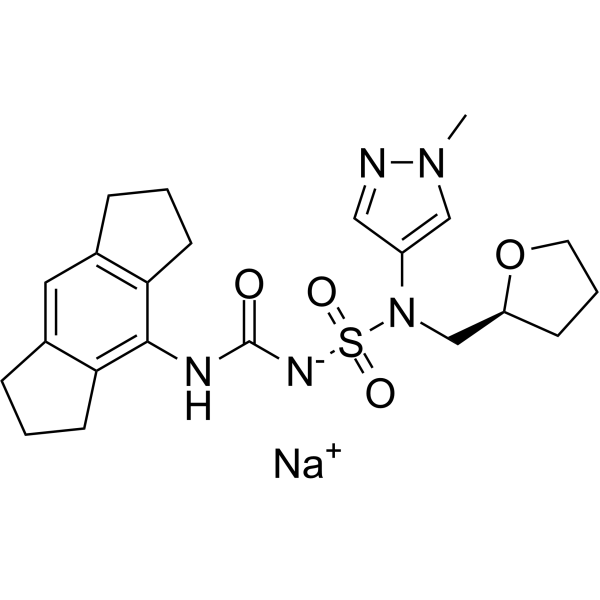
|
| DC60585 |
GLPG2737
Featured
|
GLPG2737 is a potent Type 2 Corrector of CFTR for the Treatment of Cystic Fibrosis in Combination with a Potentiator and a Type 1 Co-corrector.
|
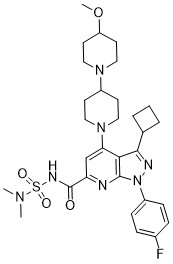
|
| DC60586 |
BIO-7488
Featured
|
BIO-7488 is a potent, selective, oral active and CNS-penetrant IRAK4 inhibitor with the IC50 of 0.6 nM and > 30 μM for IRAK4 and hERG, respectively.
|
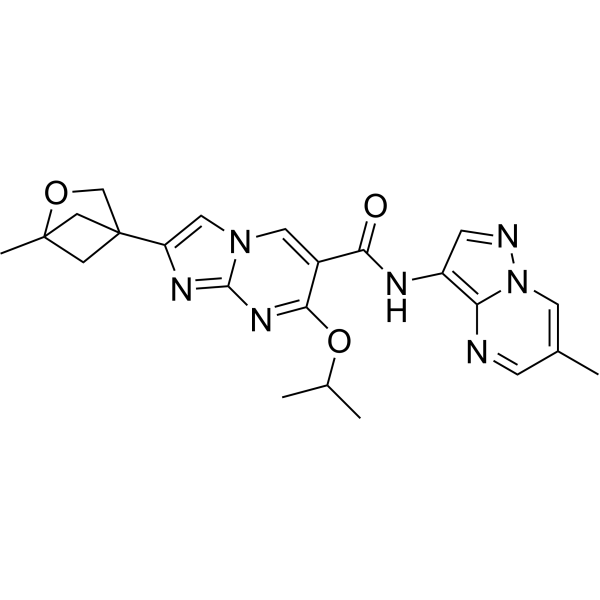
|
| DC60587 |
NMD670
Featured
|
NMD670 is an orally bioavailable skeletal muscle-specific chloride ion channel (ClC-1) inhibitor. NMD670 showed to restore muscle function in rat models of myasthenia gravis (MG).
|
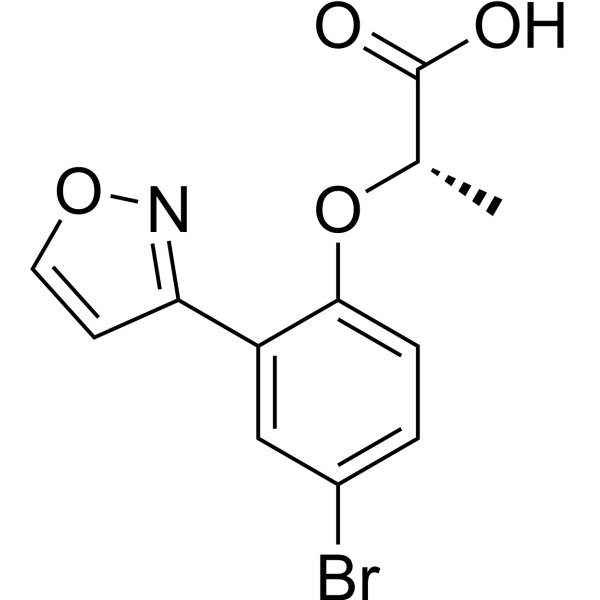
|
| DC60588 |
VVD-133214
Featured
|
VVD-133214 is a covalent allosteric inhibitor of WRN helicase with potent cellular TE50 in both human and mouse WRN helicase DNA unwinding assays. VVD-133214 potently inhibits cell growth in MSI-H HCT-116 cells with GI50 of 0.066 μM but in neither MSS SW480 nor HCT-116 WRN C727A mutant cells. |
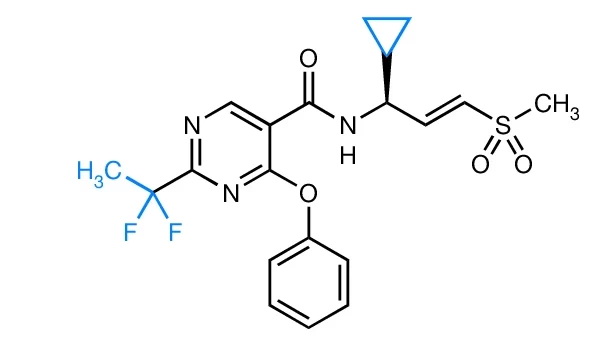
|
| DC66108 |
3β-[N-(N′,N′-Dimethylaminoethyl)carbamoyl]cholesterol
Featured
|
3β-[N-(N′,N′-Dimethylaminoethyl)carbamoyl]cholesterol, a lipid, has been investigated in cancer gene therapy and vaccine delivery system. |
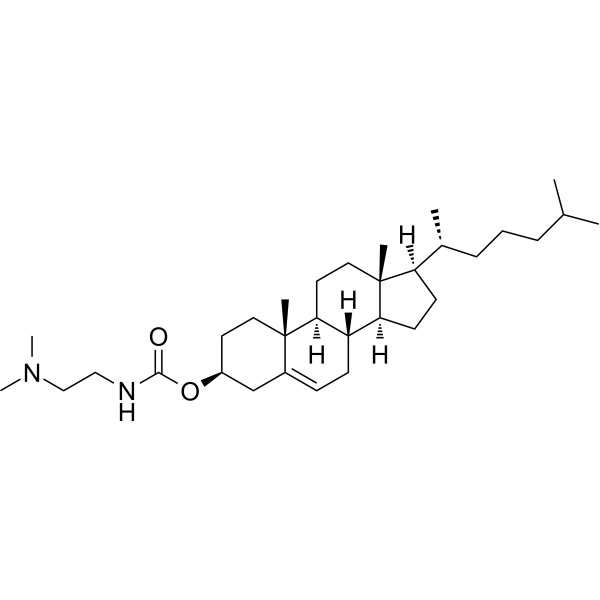
|
| DC66109 |
DSPE-PEG-COOH
Featured
|
DSPE-PEG Carboxylic acid (sodium), MW 2000 is a PEG-lipid that can be used to form micelles as nanoparticles for drug delivery. DSPE-PEG Carboxylic acid (sodium), MW 2000 increases the blood circulation time of liposomes. |
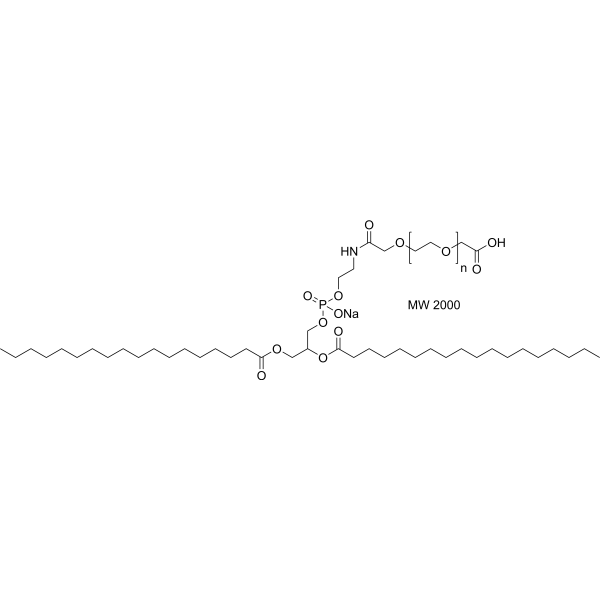
|
| DC66110 |
DSPE-PEG-NHS
Featured
|
NHS PEG DSPE can be easily incorporated into liposomes and other nanoparticles through the reaction of NHS with amine. DSPE peg NHS is one of the most commonly used reactive phospholipids that bind antibodies, proteins, peptides or other substrates to the surface of liposomes and other lipid peg nanoparticles. Pegylated phospholipids have longer blood circulation time and higher encapsulation molecular stability. We have developed a series of chemically reactive phospholipid peg products with high purity, various molecular weights and excellent chemical reactivity. These lipid peg conjugates exhibit excellent amphiphilic properties and provide superior advantages for the modification, preparation and transportation of small and large molecules. |

|
| DC66111 |
DSPE-PEG-SH, MW 2000
Featured
|
DSPE-PEG-SH, MW 2000 is a pegylated phospholipid with thiol group which is reactive with maleimide to form a covalent thioether linkage. The amphiphatic polymer can form lipid bilayer in aqueous solution and be used to encapsulate agents for drug delivery system, such as mRNA vaccine. |
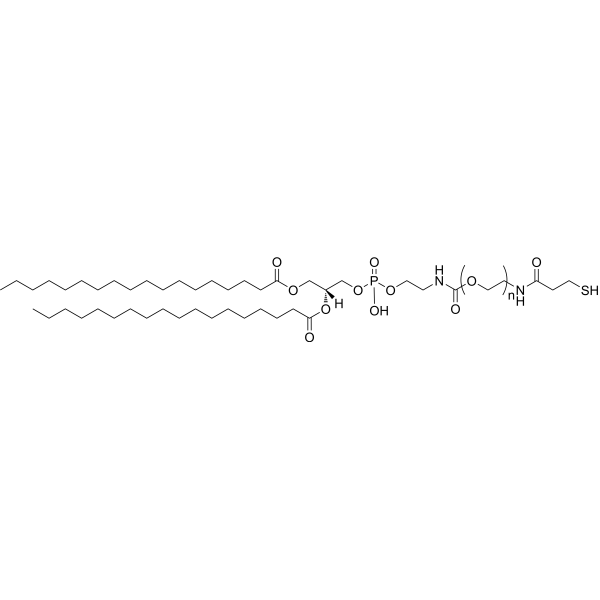
|
| DC66112 |
DSPE-PEG-Biotin (MW 2000)
Featured
|
DSPE-PEG-Biotin (MW 1000) is a PEG-based PROTAC linker |

|





























